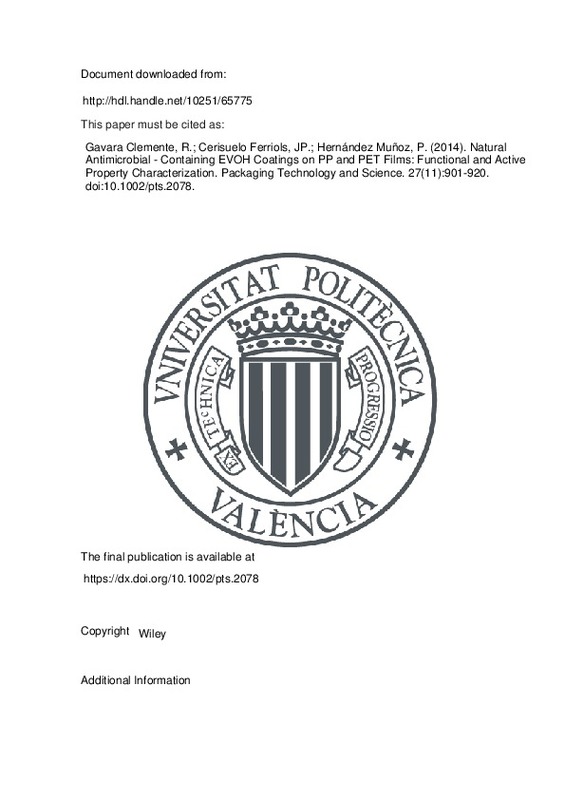JavaScript is disabled for your browser. Some features of this site may not work without it.
Buscar en RiuNet
Listar
Mi cuenta
Estadísticas
Ayuda RiuNet
Admin. UPV
Natural Antimicrobial - Containing EVOH Coatings on PP and PET Films: Functional and Active Property Characterization
Mostrar el registro completo del ítem
Gavara Clemente, R.; Cerisuelo Ferriols, JP.; Hernández Muñoz, P. (2014). Natural Antimicrobial - Containing EVOH Coatings on PP and PET Films: Functional and Active Property Characterization. Packaging Technology and Science. 27(11):901-920. https://doi.org/10.1002/pts.2078
Por favor, use este identificador para citar o enlazar este ítem: http://hdl.handle.net/10251/65775
Ficheros en el ítem
Metadatos del ítem
| Título: | Natural Antimicrobial - Containing EVOH Coatings on PP and PET Films: Functional and Active Property Characterization | |
| Autor: | Gavara Clemente, Rafael Cerisuelo Ferriols, José Pascual Hernández Muñoz, Pilar | |
| Entidad UPV: |
|
|
| Fecha difusión: |
|
|
| Resumen: |
[EN] Natural antimicrobials are currently being tested by many researchers for active packaging applications as a response to consumer demands for safer food products. In previous work, several packaging materials consisting ...[+]
|
|
| Palabras clave: |
|
|
| Derechos de uso: | Reserva de todos los derechos | |
| Fuente: |
|
|
| DOI: |
|
|
| Editorial: |
|
|
| Versión del editor: | https://dx.doi.org/10.1002/pts.2078 | |
| Código del Proyecto: |
|
|
| Agradecimientos: |
The authors thank the Spanish Ministry of Science and Innovation (projects AGL2009-08776 and AGL2012-39920-C03-01), European Commission (Nafispack project 212544) and Generalitat Valenciana (Josep P. Cerisuelo fellowship) ...[+]
|
|
| Tipo: |
|







![[Cerrado]](/themes/UPV/images/candado.png)

